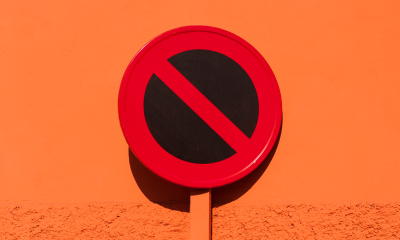Technology
Here’s Elon Musk’s latest self-driving cars promise. And what you can really expect.

If you thought Tesla robo-taxis were a far-fetched Elon Musk delusion, the Tesla CEO doubled down on the self-driving capable vehicles at Wednesday’s Tesla earnings call.
After a surprisingly profitable quarter (the company made $342 million after back-to-back quarterly losses), Musk sounded optimistic as he talked about full self-driving capabilities for the all-electric vehicles. He seemed heartened by last month’s V10 software update which included Smart Summon, a feature that allows Tesla cars to autonomously drive from a parking spot to the driver’s location (on private roads, such as a shopping mall lot).
On the call, Musk said “the next step will be full self-driving with Smart Summon as the beginning of that.” So far Tesla cars with the latest software update can handle parking lots on their own (more or less; an update is coming to the feature next week or so with improvements based on the 1 million Smart Summon drives owners have attempted so far). Next is training the cars to handle traffic lights, stop signs, and other common traffic situations. Musk also mentioned navigating windy, narrow roads and suburban street layouts.
That’s a lot to tackle in the next year, especially relying mostly on cameras for the car to see instead of additional LiDAR sensors which use light to measure distance and obstacles. At a transportation conference this week in San Francisco, competing self-driving car company Zoox’s CTO Jesse Levinson emphasized that for Tesla to autonomously drive beyond the Autopilot system, it will have to embrace a full sensor suite. When asked about Musk’s timeline for next year, Levinson simply stated, “no,” as in no chance that’s happening with the vision tech the cars have now.

The computer chip that will power full self-driving Tesla cars.
Currently Autopilot, the semi-autonomous driver assistance system, only works on highways and major thoroughfares and requires full driver attention and hands on the wheel at all times. But Musk expects the full self-driving software to be ready for early access users as an update to cars by the end of this year. That’s the same software that he says by the end of 2020 will turn your vehicle into a robo-taxi, ready to pick up strangers and earn you money when you’re not using the car yourself.
“You’re gonna want it all,” he said about the full self-driving option. “It’s something everyone’s gonna want.”
He said the software will be reliable enough “so you don’t have to pay attention” by the end of 2020. Even if Tesla cars are “ready” by the end of next year doesn’t mean that the taxis will start picking up fares on their own, especially since regulatory approval will need to catch up. Waymo’s self-driving car service in the Phoenix area is just starting to explore fully driverless cars on city streets without anyone in the front seat. Tesla hasn’t done this kind of testing yet — if it ever will.
Expect Autopilot and features like Smart Summon to continue to improve before robo-taxis take to the road. Tesla’s over-the-air updates continue to bring surprises, like YouTube and Netflix. On the call, Musk assured that he has no plans to start charging for any updates or entertainment features.
Also coming in the next year: the new Model Y compact SUV. Musk announced an earlier launch date, bumping that up from the fall to summer 2020. That seems more likely than a fleet of Teslas driving themselves around cities.
-

 Business7 days ago
Business7 days agoFormer top SpaceX exec Tom Ochinero sets up new VC firm, filings reveal
-

 Business6 days ago
Business6 days agoConsumer Financial Protection Bureau fines BloomTech for false claims
-

 Business4 days ago
Business4 days agoLangdock raises $3M with General Catalyst to help businesses avoid vendor lock-in with LLMs
-

 Entertainment4 days ago
Entertainment4 days agoWhat Robert Durst did: Everything to know ahead of ‘The Jinx: Part 2’
-

 Business6 days ago
Business6 days agoKlarna credit card launches in the US as Swedish fintech grows its market presence
-

 Entertainment3 days ago
Entertainment3 days agoThis nova is on the verge of exploding. You could see it any day now.
-

 Entertainment7 days ago
Entertainment7 days agoHow to watch ‘The Sympathizer’: Release date and streaming deals
-

 Entertainment6 days ago
Entertainment6 days agoHow to set boundaries in the early stages of dating






















